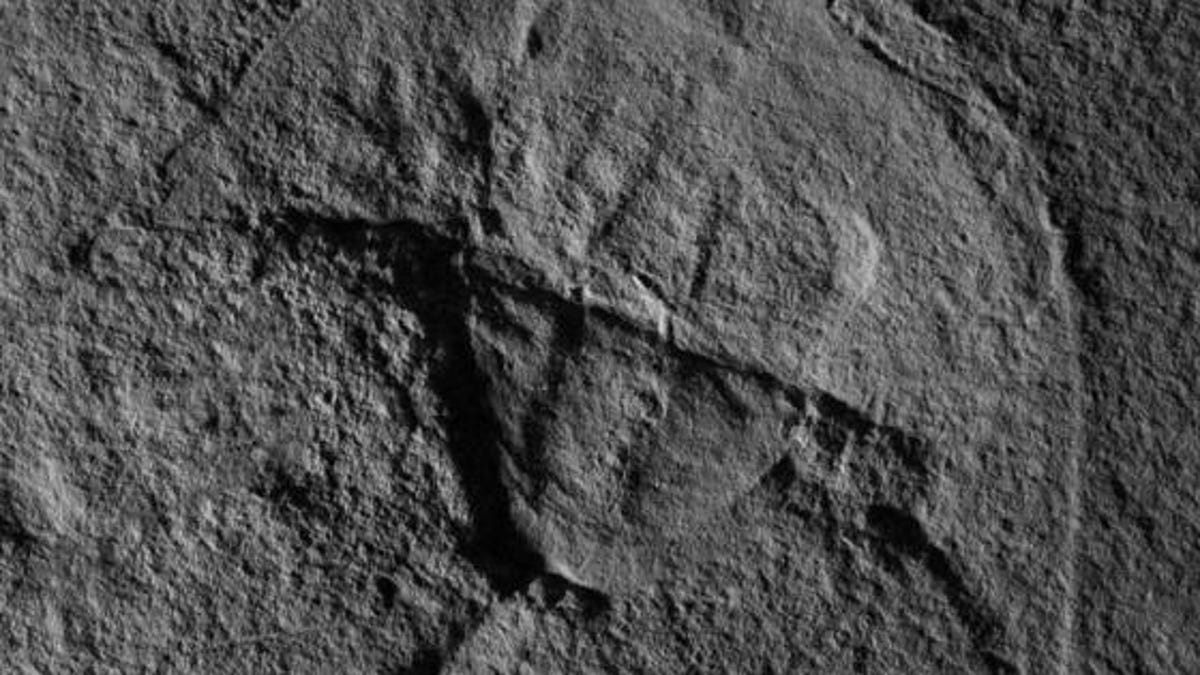Darth Vader's 'helmet' found in prehistoric fossils
The space villain's iconic head gear was being worn, in a way, long before it was ever sci-fi fashionable.

A photo of Vaderlimulus fossil horseshoe crab.
A long time ago, in a geologic period far, far different from today, Darth Vader's helmet could be found on Earth.
A drawing of the ancient, Sith-like Vaderlimulus.
Well, sort of. A newly discovered 245-million-year-old horseshoe crab fossil from the Triassic period sports a head shield with an uncanny resemblance to the famed fictional bad dude's cranium topper. The similarities to the Sith lord were so striking that the team claiming discovery of the extinct species found in Idaho opted to name it Vaderlimulus, after the one-time Skywalker.
Paleontologists from the New Mexico Museum of Natural History and Science and the University of Colorado at Denver describe the long-lost relative of modern horseshoe crabs in an article published in the current issue of the German paleontological journal Neues Jahrbuch für Geologie und Paläontologie, which is the world's oldest paleontological journal.
"Vaderlimulus, (unlike modern horseshoe crabs) has unusual body proportions that give it an odd appearance," said lead author Allan J. Lerner from the New Mexico Museum, in a release.
That may be true, but as with Lord Vader himself, I'll bet what you'd see if you pulled off its helmet would be much more grotesque.

